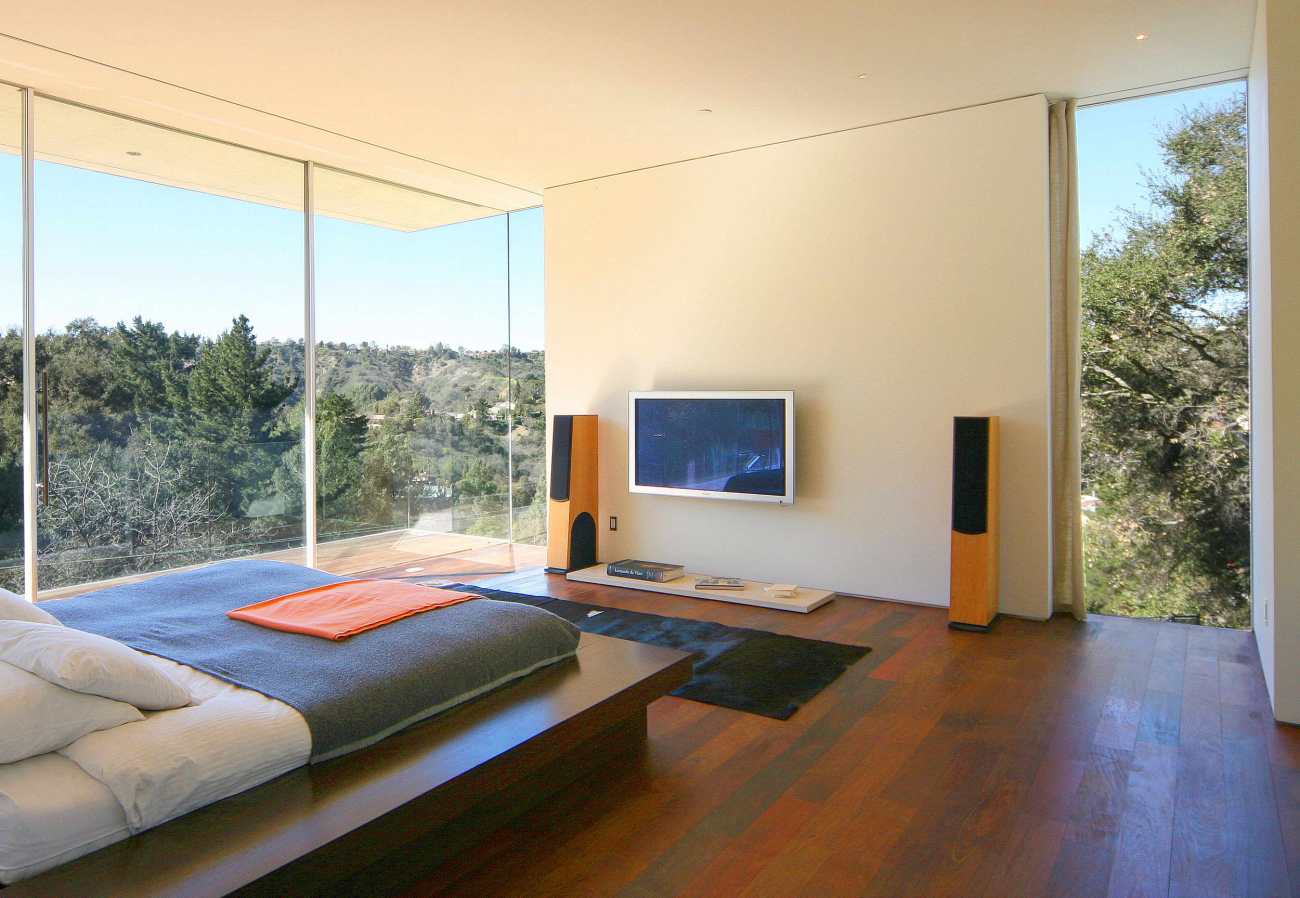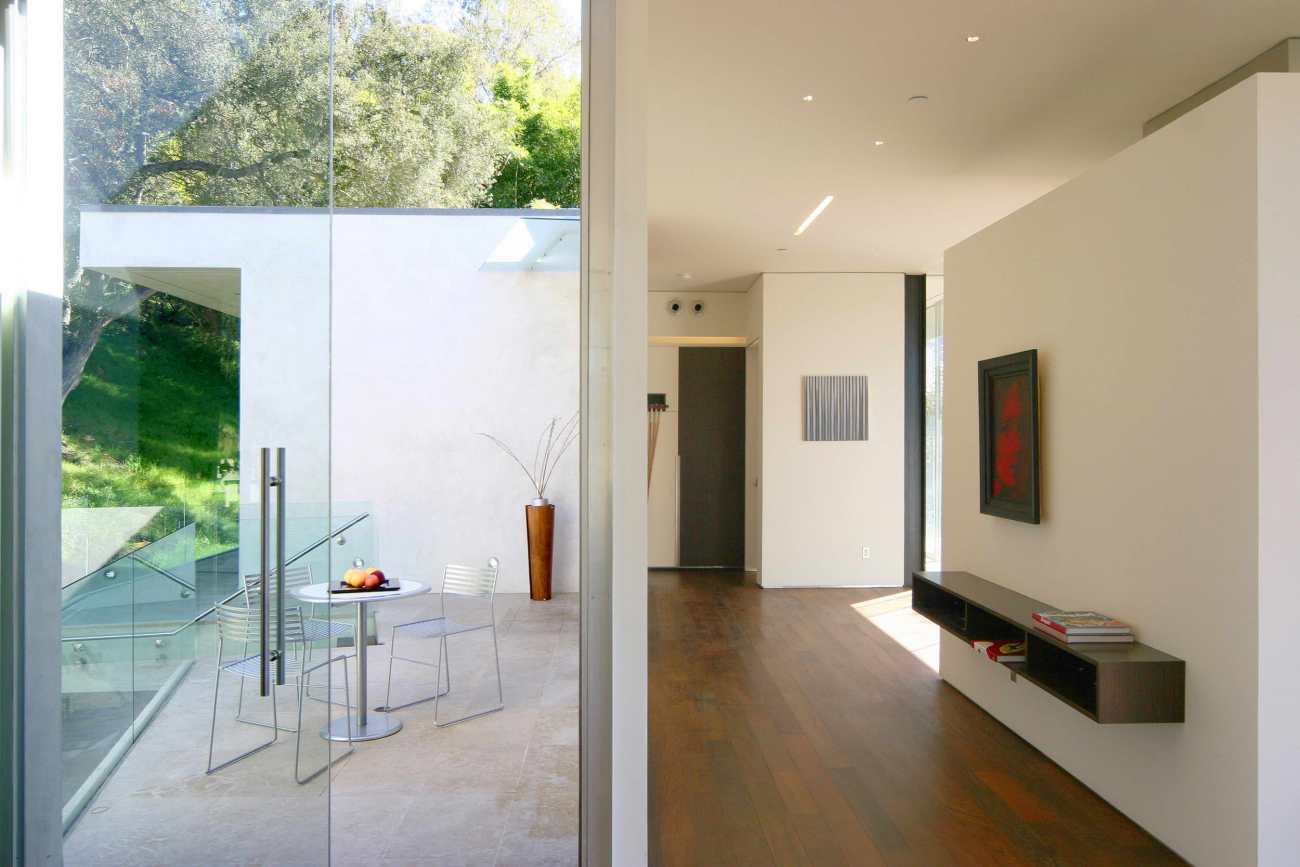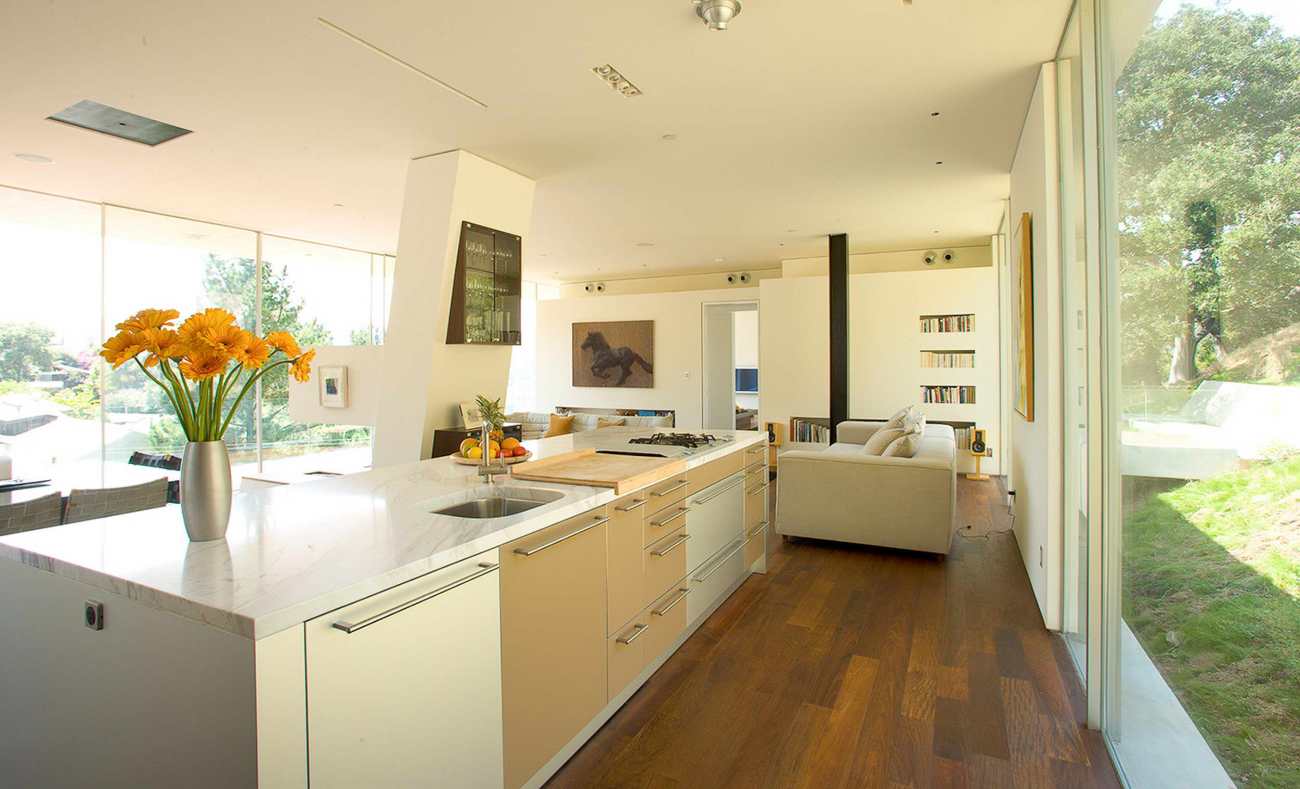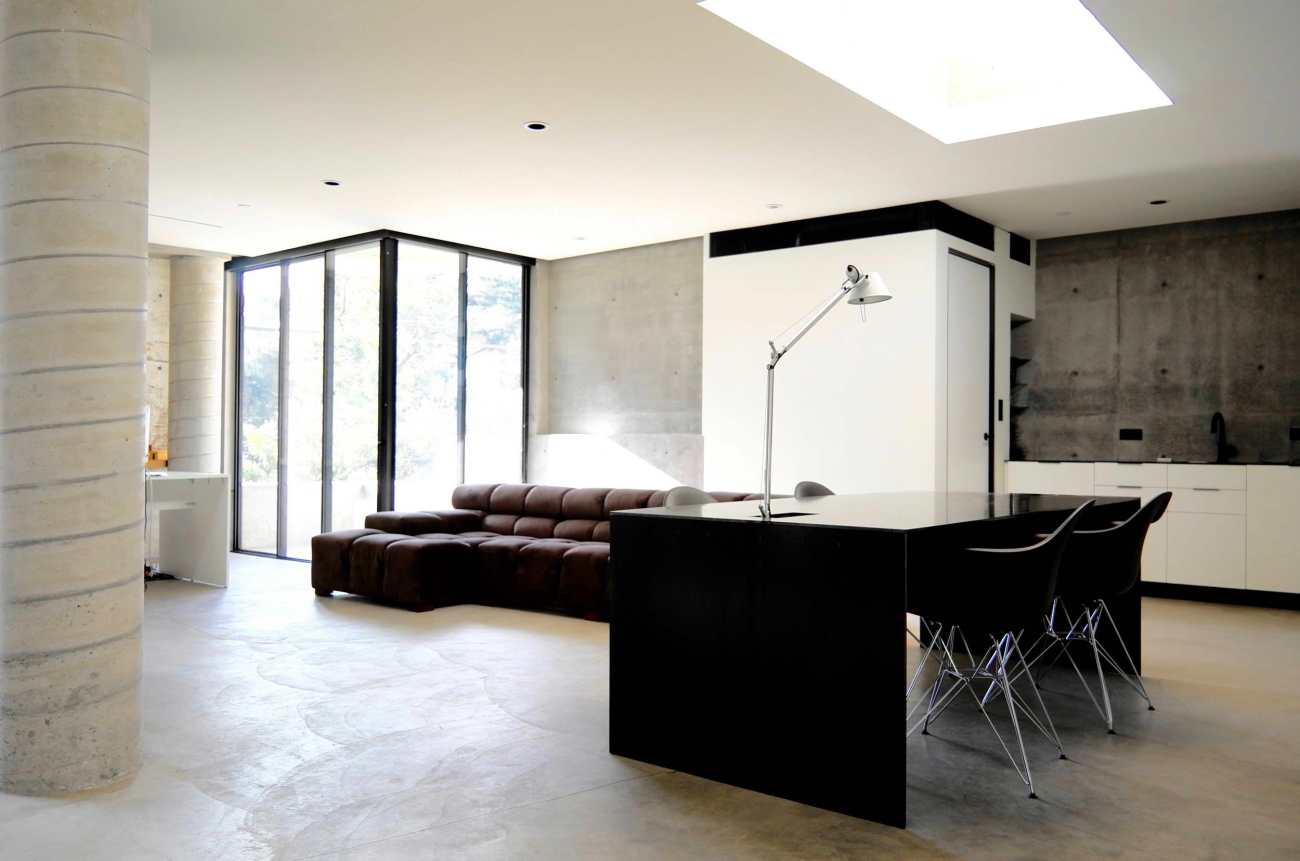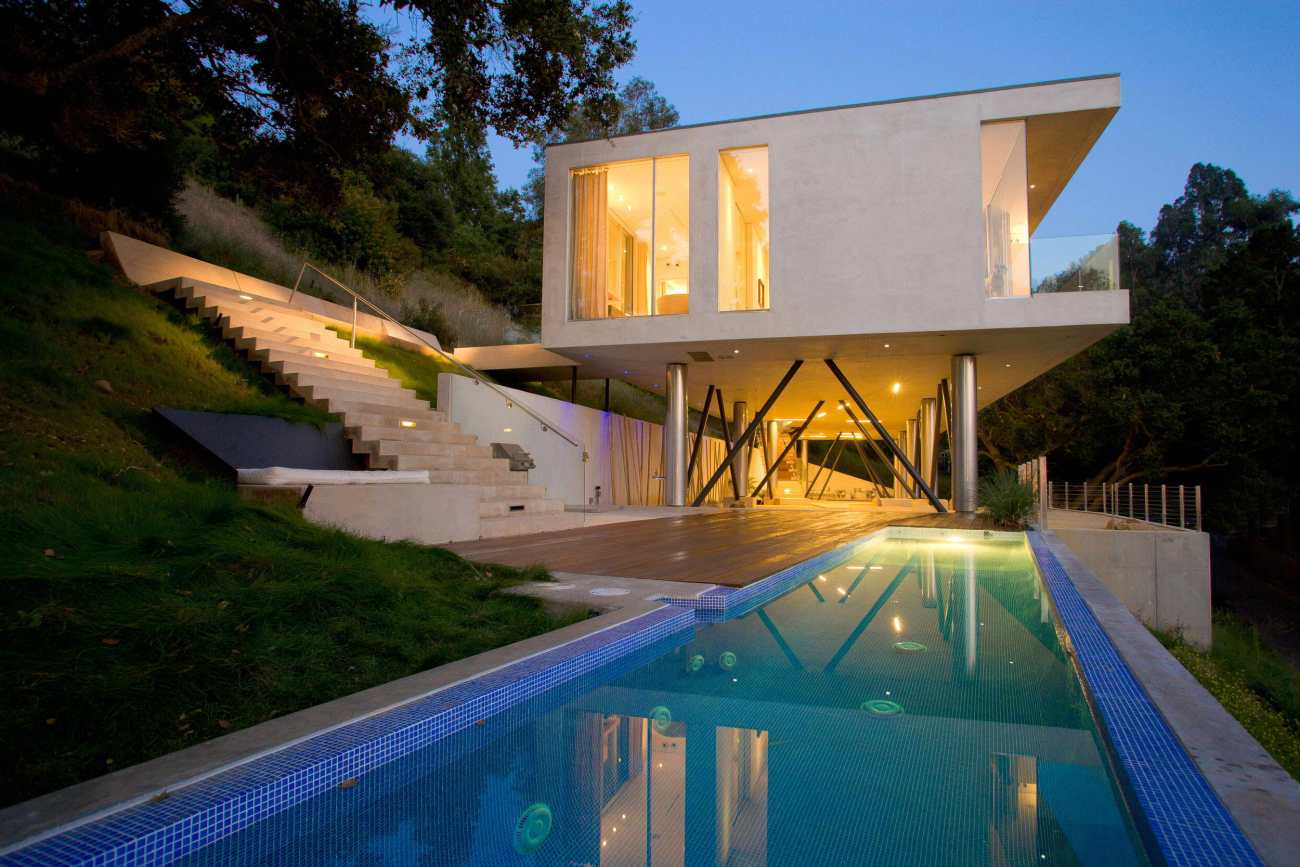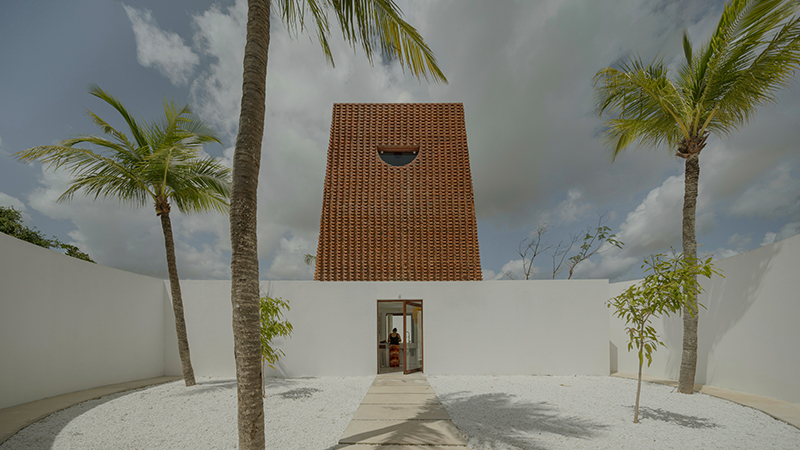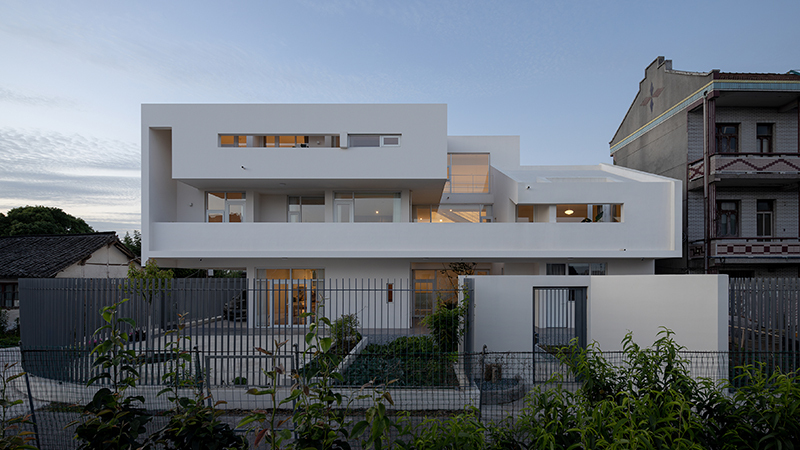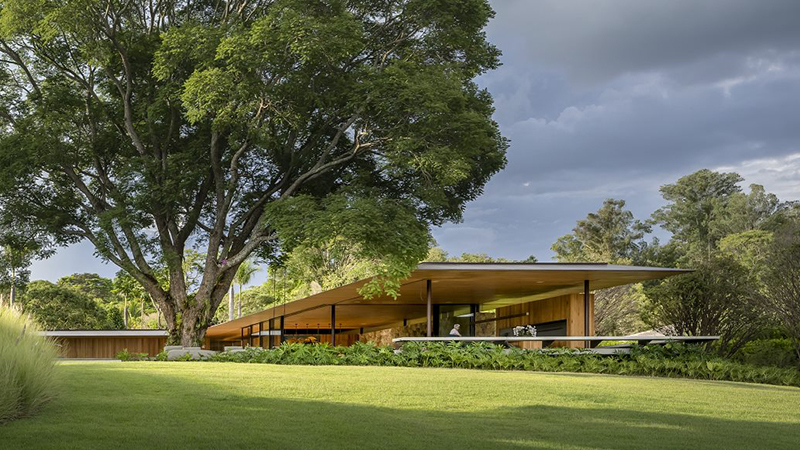| 公司: | Heusch Inc | 类型: | 建筑 |
|---|---|---|---|
| 地区: | 美国 | 标签: | 别墅私宅 |
Gerhard Heusch Inc.的创始人Gerhard Heusch为他位于加州比佛利山庄的创新橡树通道住宅推出了一个1500平方英尺的地下办公室。这个办公空间继续推进了建筑师在建造他的3500平方英尺住宅时采用的创新设计方案,该住宅于2006年在一块俯瞰本尼迪克特峡谷的丰富自然土地上完成。 新增的办公空间成功地融入了周围的环境,而没有破坏建成的房屋和土地自然美之间的建筑平衡,与Heusch对该项目的整体愿景保持一致。
Gerhard Heusch, founder of Heusch Inc. has unveiled a 1,500 sq. ft underground office addition to his innovative Oak Pass residence in Beverly Hills, California. The office space continues to advance the innovative design solutions employed by the architect in building his 3,500 sq. ft. home, completed in 2006 on an empty parcel of abundantly natural land overlooking Benedict Canyon. The additional office space succeeds in integrating into its surroundings without disrupting the architectural balance between the fully-built house and the natural beauty of the land, following in step with Heusch’s overall vision for the property.
设计
2000年,Heusch购买了一英亩令人叹为观止的土地,他决心将自己的设计融入其中,他的建筑理念开始展开。东边是景观山坡,西边是本尼迪克特峡谷的全景,他开始了一个平衡新居与自然的项目。他提出的计划是建造10根钢柱来支撑一座架空的房子,他成功地认为这将减轻任何滑坡对建筑环境的威胁。这个创新的解决方案让他放弃了15英尺的后退,在地产的自然切面上建造了一个小得多、不那么碍事的挡土墙。该设计方案提供了一个平台,使他能够将其宽敞的现代主义住宅建在山坡的树线上。"退让基本上破坏了协调环境的想法,"Heusch解释说。"我不想建造一栋独立的房子,成为山坡和峡谷之间的隔断。"
Supporting the design
Heusch’s architectural concept began to unfold in 2000 when he purchased an acre of breathtaking land that he was determined to blend his design into. With a landscaped hillside to the east and panoramic views of Benedict canyon to the west, he embarked on a project to balance his new residence with nature. The plan he put forward was to build 10 steel columns to support an elevated house, which he successfully argued would mitigate any landslide threats to the built environment. The innovative solution allowed him to forgo the 15-foot setback by building a much smaller, less obtrusive retaining wall into a natural cut in the property. The design plan provided a platform that would enable him to build his spacious, modernist home into the treeline of the embracing hillside. “A setback essentially disrupts the idea of harmonizing the environment,” explains Heusch. “I didn’t want to build a house that would essentially stand alone as a partition between the hillside and the canyon.”
极简主义树屋
凭借10英尺高的天花板和落地窗,Heusch的开放式平面图确保无缝流动的生活空间的每个房间都能看到壮观的景色。为了进一步确保畅通无阻,Heusch将房屋的大部分基础设施,包括屋顶排水、管道和电力,嵌入到支撑柱中。因此,当进入前门时,畅通无阻的视野会贯穿到房子后部的玻璃墙,露出美丽的橡树背景,强调自然环境和他的建筑环境之间的无缝连接。
A minimalist treehouse
With 10-foot ceilings and floor-to-ceiling windows, Heusch’s open floorplan ensures that every room of the seamlessly flowing living space has a spectacular view. To further ensure unobstructed flow, Heusch embedded much of the house’s infrastructure, including roof drainage, plumbing, and electricity, into the support columns. As a result, upon entering the front door, unobstructed views carry through to a glass wall at the rear of the house, revealing a beautiful oak tree backdrop that emphasizes the seamless connection between the natural surroundings and his built environment.
单层布局的室内以天然灰泥墙和巴西胡桃木地板为框架,定制设计的家具、橱柜、配件和型材进一步体现了Heusch的极简主义视觉。这里有三间卧室,包括两间客房,可以通过滑动墙连接在一起。西班牙大理石点缀着客房浴室,而主浴室则由葡萄牙石灰石点缀,包括一个由一整块石头手工雕刻而成的浴缸。
The interior of the single-level layout is framed by natural stucco walls and Brazilian walnut floors, with custom-designed furniture, cabinets, fittings, and profiles that further embody Heusch’s minimalist vision. There are three bedrooms, including two guest bedrooms that can be linked together courtesy of a sliding wall. Spanish marble anoints the guest bathrooms, while the master bathroom is accented by Portuguese limestone, including a soaking tub that was hand-carved from a single block.
为了适应一项额外的规定,要求根据房屋的总面积设置第二个出口,Heusch又进行了一次创新的建筑调整。为了满足这一要求,他建造了一座小桥和楼梯,从架空的主卧室出口,从山坡上通向泳池区和相邻的禅意花园。
In order to accommodate an additional regulation requiring a second exit, based on the home’s total floor space, Heusch made another innovative architectural tweak. To meet the requirement, he built a small bridge and staircase exiting the elevated master bedroom, which leads down from the hillside to a pool area and adjacent Zen-style garden.
每日的生活
在2006年完成了这栋房子之后,Heusch在接下来的几年里生活在阿根廷,在那里他受命于一个酒店项目。在2010年回到加州后,他发现自己的心思就在于能在和自己生活的环境一样的灵感中工作。是时候建造他的新办公室了,要有一个全新的地下设计,不能打扰他的漂浮树屋。
The daily commute
After completing the house in 2006, Heusch spent the next few years living in Argentina, where he was commissioned to work on a hotel project. After returning to California in 2010, he found that his heart lay with the idea of working from the same inspirational environment that he was living in. It was time to build his new office, with a fresh underground design that wouldn’t disturb his floating treehouse.
Heusch决定将他的办公室建在禅意花园的垫子下面,这个过程从在挡土墙前挖掘80卡车的土开始。相邻的游泳池区域被完全保留下来,他小心翼翼地避免了对房屋主要支撑柱的干扰。不过,最后还是将其中一根现有的支撑柱纳入其中。在当地一位分包商的帮助下,Heusch架设了混凝土结构的墙体,在浇筑水泥之前,将定制的固定装置焊接到钢筋上,以便像他为房子所做的那样,满足电气和其他线路的需求。他在现有的挡土墙上凿出了一扇窗户,还在新的混凝土墙上凿出了一个入口。为了从主入口进入办公空间,他建造了一个楼梯,其悬臂式踏板也焊接在钢筋上。结构建成后,Heusch用混凝土天花板封住了这个空间。然后,他重新引入了上方前花园空间的沙子和铺路石,并添加了从挖掘中提取的战略性放置的巨石,以及两块新玻璃地板。
Heusch decided that he would build his office beneath the pad of the Zen-like garden, a process which began with the excavation of 80 truckloads of dirt in front of the retaining wall. The adjacent pool area was left completely intact, and he carefully avoided disturbances to the main support columns of the house. However, in the end, one of the existing support columns was incorporated. With the help of a local sub-contractor, Heusch erected the walls of the concrete structure, welding custom fixtures to the rebar reinforcements before pouring the cement in order to accommodate electrical and other wiring needs as he had done for the house. He cut a window out of the existing retaining wall, as well as an entrance in a new concrete wall. To descend from the main entrance into the office space, he built a staircase, with its cantilevered treads also welded to the rebar. Once the structure was built, Heusch sealed the space with a concrete ceiling. He then reintroduced the sand and pavers of the former garden space above and added strategically-placed boulders extracted from the dig, as well as two panels of new glass flooring.
Heusch实现了他的目标,创造了1500平方英尺的地下,但自然采光的办公空间。"我很高兴能够复制建筑环境与自然环境协调的过程,"Heusch总结道。"我现在拥有了我所能想象的最宁静的办公通勤环境。"
Heusch had achieved his goal of creating 1,500 sq. ft. of underground, yet naturally-lit, office space.“ I am pleased to have been able to replicate the process of harmonizing the built environment with its natural surroundings,” concludes Heusch. “I now have the most serene office commute that I could have ever imagined.”
2017年竣工的办公室加建工程花了Heusch 10个月的时间,让国际社会再次关注这个每一次都在创新的建筑项目。在自然与建筑环境之间的微妙平衡重要性成倍增长的历史时刻,Heusch的橡树坳美学和结构创新引起了建筑界的巨大兴趣,成为未来项目的典范。"生活在我所创造的建筑环境中,有绝对的专业优势。"Heusch总结道。"项目的成功,以及我周围的自然美景,每天都能激发出推进建筑设计与自然环境融合的新想法。"
Completed in 2017, the office addition took Heusch 10 months to build and has renewed international attention to an architectural project that innovates at every turn. At a point in history when the delicate balance between nature and the built environment has exponentially grown in importance, Heusch’s Oak Pass aesthetic and structural innovation has garnered tremendous interest from architectural circles as a model for future projects. “There is a definite professional advantage to living within the built environment that I have created,” concludes Heusch. “The success of the project, and the natural beauty of my surroundings, inspire new ideas every day for advancing the integration of architectural design into the natural environment.”
Project: Oak Pass Residence Addition
Architects: Heusch Inc
Client: Gerhard Heusch
Contractor: Owner/builder
Concrete Contractor: Toltec Concrete
Area of project: 320m2 House 150m2 Studio Addition
Built: 2006 House, 2017 Studio Addition
Photography: Frederico Zignani, Gerhard Heusch
更新日期:2020-12-04 13:49:23
非常感谢 Heusch Inc 带来的精彩项目, 查阅更多Appreciations towards Heusch Inc for sharing wonderful work on hhlloo. Click to see more works!




